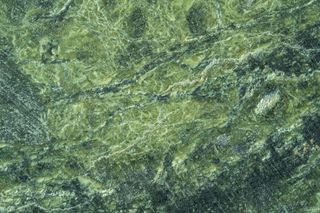
A host of hardy microbes may be living miles beneath the ocean floor, new research suggests.
Complex chemical compounds found in the rocks spewed from oceanic mud volcanoes suggest microbial life-forms may be dwelling some 32,800 feet (10,000 meters) beneath the seafloor. Though scientists have not yet found a smoking gun proving that life exists in these subterranean depths, similar chemical compounds have been found in other places where hardy microbes cling to life.
"Although we cannot pinpoint the exact origin of the organic matter, chemical analysis of the constituents resembles molecular signatures that could be produced by microbial life deep within or below the mud volcano," the researchers wrote in the study.
For more than two decades, scientists have known that life lurks beneath the Earth's crust. For instance, in 2010, scientists found microbes nearly 0.75 miles (1,391 m) beneath the planet's surface, in the mysterious gabbroic layer of Earth's crust, the deepest portion of the crust that lies above the oozing mantle. The mucky sediment in the ocean's crust may also teem with microbes that live in a thriving community, according to a 2013 study. Still other work has shown that microbes live in the watery portions of the Earth's mantle, which lies even deeper. The deeper that scientists have looked, the deeper life has seemed to go. [Photo Timeline: How the Earth Formed]
In the new study, which was published yesterday (April 10) in the journal Proceedings of the National Academy of Sciences, researchers ventured to the remote reaches of the South Chamorro Seamount, an underwater volcano close to the Mariana Trench, the deepest part of the ocean. The seamount is part of a vast string of ocean-buried volcanoes that span the 1,740-mile-long (2,800 kilometers) subduction zone from Tokyo to Guam, where the Pacific plate is diving beneath the Philippine Sea plate.
To search for possible life signs beneath the seafloor, the team sampled serpentinite taken from just beneath the ocean-floor surface. Serpentinite is a greenish rock that forms when mantle rock called olivine reacts with water, producing methane and gases that some microbes consume as food. The team estimated that the serpentinite came from more than 12.4 miles (20 km) deep. Other work has tied the presence of serpentine rocks to primitive microbes.
The team found chemical traces that could have been associated with amino acids, the building blocks of proteins, although other organic processes can also produce these signatures, the researchers wrote in the paper. Other traces of organic matter with complicated chemical structures were also found, as well as tiny flecks of nickel-iron alloys that are often formed by primitive microbes in hydrothermal vent areas.
Sign up for the Live Science daily newsletter now
Get the world’s most fascinating discoveries delivered straight to your inbox.
"We suggest, based on the similarities with molecular signatures of bacteria-derived biopolymers, that the organic matter may represent remnants of microbial life within or even below the mud volcanoes," the researchers wrote in the paper.
At this tectonically active part of the ocean, ocean water, oceanic crust, mantle and sediments are all churned and transported into a region in the mantle called the forearc mantle. From there, fluids may seep through fractures and fissures into the oceanic plate and mantle lying on top of it. This combination of fluid and rock may have provided the Goldilocks environment needed for microbes to thrive, the researchers explained.
Though it's not clear exactly how deep microbes could dwell (if there are any such microbes), the team did a rough calculation to estimate that limit. Past research showed that life can survive at temperatures as hot as 251 degrees Fahrenheit (122 degrees Celsius) and at pressures 10,000 times higher than atmospheric levels. Using a simple model for temperature and pressure, the team estimated that primitive microbes such as Archaea could dwell up to 32,800 feet (10,000 m) below the surface.
Originally published on Live Science.

Tia is the managing editor and was previously a senior writer for Live Science. Her work has appeared in Scientific American, Wired.com and other outlets. She holds a master's degree in bioengineering from the University of Washington, a graduate certificate in science writing from UC Santa Cruz and a bachelor's degree in mechanical engineering from the University of Texas at Austin. Tia was part of a team at the Milwaukee Journal Sentinel that published the Empty Cradles series on preterm births, which won multiple awards, including the 2012 Casey Medal for Meritorious Journalism.